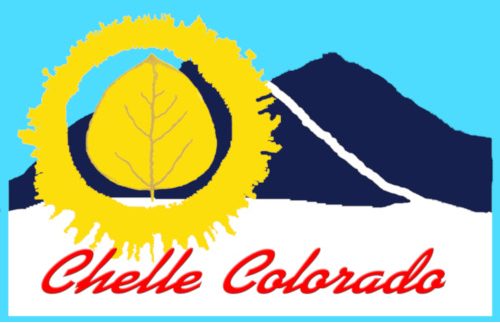
My name is Michelle Bowman, and I’ve been traveling down a twisty, turny road towards a life dedicated to the fiber arts. While I learned to sew and crochet as a child and I’ve been making stuff ever since then, I didn’t really self-identify with being a creative person until about fifteen years ago. I remember the day, actually—I was with a group of friends, we’d had a happy afternoon together, and we were sitting around the dining room table, just chatting. Somebody was doodling with pen on paper, and I just had a sudden urge to color. Someone had given us some oil pastels, so on paper from an old sketch book, I colored. It was swirls of color, arranged in rainbow sequence, and for the first time EVER, it didn’t matter—it didn’t matter what anybody else thought, it didn’t matter what I thought, it didn’t matter what the end product was. What did matter was the doing of it—that I was having fun, that I was liberated, unencumbered, that I had the freedom of a 6-year-old…or at least, the freedom a 6-year-old should have while discovering self-expression via crayons. (Yep, there’s a story there.)
While I put off crochet in my twenties, I never did stop sewing. But it wasn’t what I thought of as creative sewing; it was done to save money on things I needed. I made curtains, bathrobes, pillows—stuff like that. I took up, and left off, other crafts along the way: dried and silk flower arranging, cross stitch, seed beading and other jewelry making—I think I’ve forgotten about some other crafts I sampled. But I have always wanted to make things that were useful—not knick-knacks that sat on a shelf and needed to be dusted every once in a while, but useful things that were also decorative.
But clothing had always eluded me. I learned to use a sewing machine in 7th grade (anybody else remember home economics classes?) and we had to make a garment for ourselves to pass the class. I chose a wrap top, thinking that it would be easier to fit. I really liked that class, and I was thrilled at the chance to learn how to use a sewing machine. I made my garment the way the teacher and the pattern envelope said: measure bust, measure waist, cut along this line, sew along this line. I got an A on my project, but it didn’t fit. It gaped in the front and was too large in the shoulder. I tried to make other garments after that, thinking that wrap garments just didn’t work for me. Same thing happened: the garment fit around the bust, but was otherwise too large. (It would be a couple of decades before I found out why.)
Coloring Day opened a door for me. Being that happy, enjoying the making rather than worrying about what happens afterward or that it meets with someone else’s approval, just…I don’t know… turned on a switch. Ever since then, I have thought of myself as a creative person, and that has given me the power to delve, to try new things because YES I CAN do them, if I only try and practice. I make lots of clothing and costumes now, after lots of classes and study on sewing and fitting.
Because of Coloring Day, I felt brave enough to try a craft that had eluded me at an early age—knitting. The short story about knitting is that my first-grade teacher decided to offer a knitting class to us. I thought knitting would be easy for me; I already knew how to crochet. I showed up, ready to go, and my teacher looked at me and said, “This class is for right-handers; you won’t be able to do this, because you’re left handed.” Disappointed, but determined to try, I stayed. I remember trying to hold one needle between my knees as I used my left hand to try to make the stitches. It didn’t work, and for a long time, I counted that experience as my first major failure in life. It really affected my willingness to try new things for a long time. But, with new-found courage after Coloring Day, I decided I needed to challenge old beliefs, so I signed up for a class at a local yarn shop. Margaret Tullis, the best and most patient knitting teacher ever, said, “It doesn’t matter in knitting what hand you write with, honey.” And I learned that we hold our needles differently now than we did when I was little, and the 6-year-old me was soooo happy. I got a great foundation in knitting from that class, and I went on to take lots of classes.
And if Coloring Day opened a door, Knitting Day opened a world for me. I dove headfirst into yarn craft; I took tons of knitting classes, I learned to spin, and I completed the work to be certified as a Knitting Instructor through the Craft Yarn Council.
Along the way from there to here, the Internet happened. And lovely, generous people have posted their experiences: how they do things, what they learned, what happened when they tried this and this, what classes are worth it, what pitfalls to avoid. And they’ve shared their own travels along the road to learning and mastering their craft. So, part of what I hope to do here is to share how I do things and what I’ve learned. If I can help somebody else learn a new way to do things, that would be cool!
